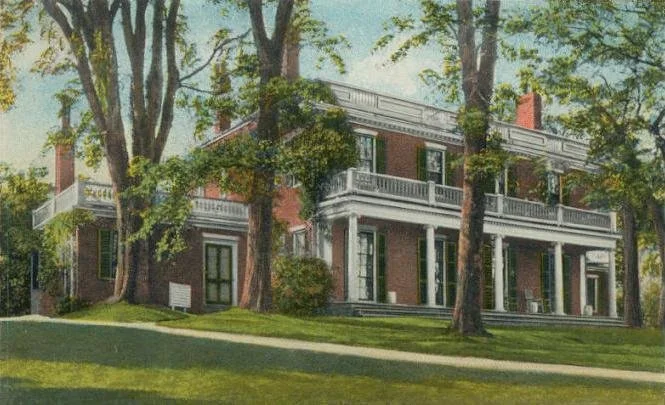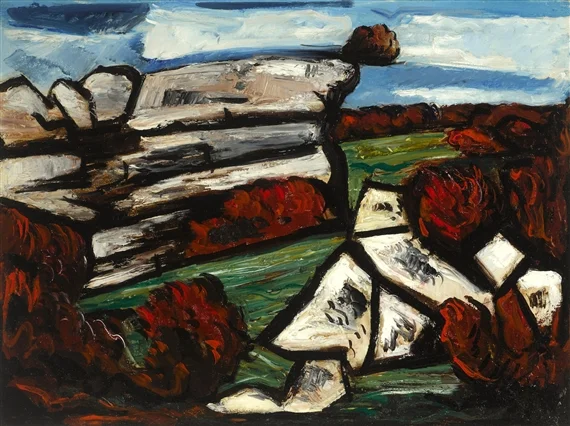New England on the rocks
“Rock Doxology’’ (oil on canvas), by Marsden Hartley (1877-1943), at the Cape Ann Museum, Gloucester, Mass. While Hartley lived in many places, including Europe, he was born in the Maine mill town of Lewiston (where he had an unhappy youth) and died in Ellsworth (near the resort town of Bar Harbor) and in his last decades called himself “The Painter of Maine.’’
Rocks sure are icons of New England!
Ellsworth’s Col. John Black House, built 1824–1827 after a pattern book design by Asher Benjamin; now part of Woodlawn Museum. Shipping, shipbuilding, fishing and manufacturing made many people rich on the Maine Coast in the early and mid 19th Century, and many of their gorgeous houses are still standing.
'Druidic' Dogtown
Dogtown, on Cape Ann, in 1908.
''The place (Dogtown, in Gloucester, and Rockport, Mass.) is forsaken and majestically lovely as if nature had at last formed one spot where she can live for herself alone.. (it) looked like a cross between Easter Island and Stonehenge -- essentially druidic in it appearance, it gives the feeling that an ancient race might turn up at any moment and renew an ageless rite there.''
-- Marsden Hartley (1877-1943, modernist painter, poet and essayist), one of whose paintings of Dogtown is below, as is a brief history of the place.
The ghost town known as Dogtown is divided between Gloucester and Rockport. Dogtown was first settled, as a farming village, in 1693, with the name said to develop much later from dogs that women kept while their husbands were fighting in the American Revolution. In the mid-1700s as many as 100 families inhabited Dogtown, which was stable until after the American Revolution.
Most of the farmers in Dogtown moved away by the end of the War of 1812 and the area became known for its rather creepy beauty and huge boulders.




